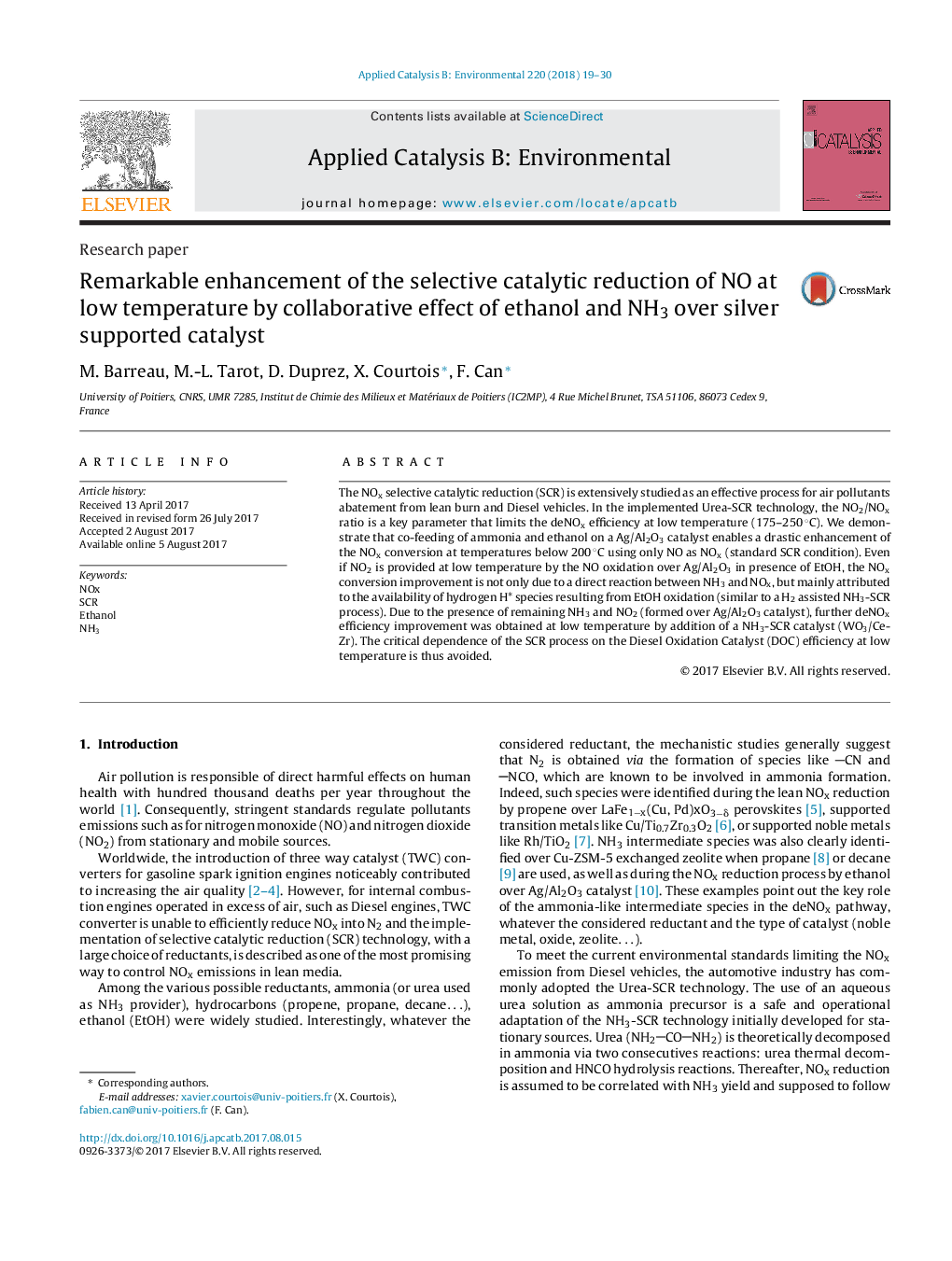| Article ID | Journal | Published Year | Pages | File Type |
|---|---|---|---|---|
| 6453544 | Applied Catalysis B: Environmental | 2018 | 12 Pages |
â¢DeNOx efficiency of EtOH-SCR process is boosted at 175-250 °C by NH3 co-feeding.â¢NOx conversion improvement is not only due to reaction between NH3 and NOx.â¢EtOH oxidation reaction provides H* species involved in deNOx enhancement.â¢EtOH favors NO to NO2 oxidation over Ag/Al at low temperature (175-250 °C).â¢A dual-bed system Ag/Al2O3 + WO3/Ce-Zr enables a further enhancement of NOx conversion.
The NOx selective catalytic reduction (SCR) is extensively studied as an effective process for air pollutants abatement from lean burn and Diesel vehicles. In the implemented Urea-SCR technology, the NO2/NOx ratio is a key parameter that limits the deNOx efficiency at low temperature (175-250 °C). We demonstrate that co-feeding of ammonia and ethanol on a Ag/Al2O3 catalyst enables a drastic enhancement of the NOx conversion at temperatures below 200 °C using only NO as NOx (standard SCR condition). Even if NO2 is provided at low temperature by the NO oxidation over Ag/Al2O3 in presence of EtOH, the NOx conversion improvement is not only due to a direct reaction between NH3 and NOx, but mainly attributed to the availability of hydrogen H* species resulting from EtOH oxidation (similar to a H2 assisted NH3-SCR process). Due to the presence of remaining NH3 and NO2 (formed over Ag/Al2O3 catalyst), further deNOx efficiency improvement was obtained at low temperature by addition of a NH3-SCR catalyst (WO3/Ce-Zr). The critical dependence of the SCR process on the Diesel Oxidation Catalyst (DOC) efficiency at low temperature is thus avoided.
Graphical abstractDownload high-res image (111KB)Download full-size image
